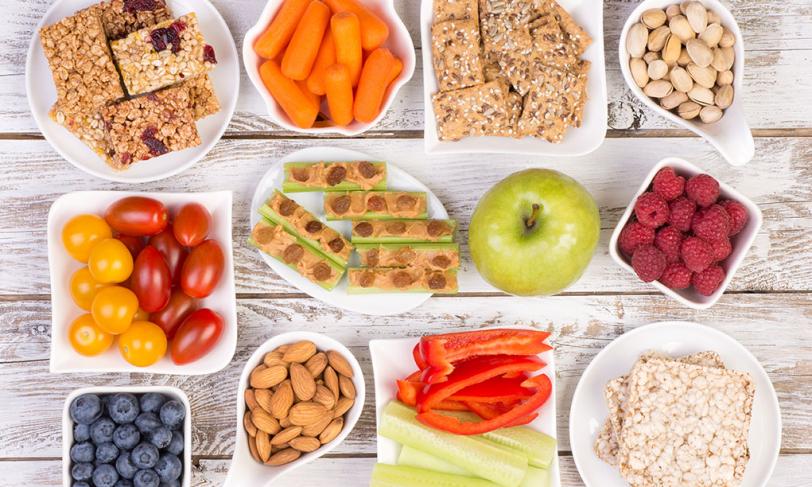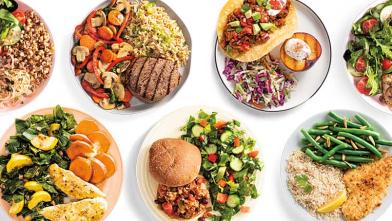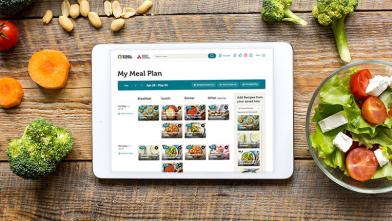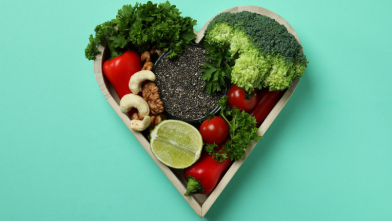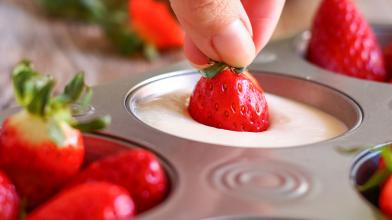With social distancing and mandates to stay at home, many people are having to get creative with eating and cooking more meals at home. When you're cooped up inside with easy access to the kitchen, it's easy to start grazing all day and lose the structure of planned meals. How can you enjoy snacks and still keep it healthy?
Related: Tips and Recipes for Staying Healthy While Staying Home
To snack, or not to snack?
In the past, typical meal plans for type 2 diabetes often called for two or three between-meal snacks each day. It was believed that snacks were necessary to help stabilize blood glucose levels.
Now we know that not everyone with diabetes (particularly type 2 diabetes) routinely needs between-meal snacks, especially if three regular meals are part of the day.
Listen to your body and watch your blood glucose patterns; let them be your guide when it comes to snacking. Here are three questions to ask yourself when considering a snack:
- Are you truly hungry? Keep in mind that snacks add extra calories. So if weight loss is one of your goals, plan for those extra snack calories by trimming calories elsewhere in the day.
- Do you need extra fuel for physical activity?
- Do you need extra carbohydrate to keep blood glucose levels in range?
If the answer is “yes” to any of these questions, then it may be time for a snack.
What to snack on?
When hunger hits, select snacks with 3 simple things in mind:
- First - and this is especially important if you or a family member has diabetes - select snacks that promote keeping blood glucose in range.
- Second, I think snacks are a great opportunity to fit in a non-starchy vegetable or fruit.
- And lastly, snacks should be easy to prepare, satisfying, and tasty!
So, what to snack on? Here are 10 ideas to get you started. The carbohydrate content of these snack ideas varies, so you may need to adjust amounts to what works best for you.
1. Air-popped or light microwave popcorn. Did you know you can pop plain popcorn kernels in a small brown paper sack? Pump up flavor with a sprinkle of black pepper and parmesan cheese. 3 cups will have about 15 g carbohydrate. This is a simple, tasty whole grain snack.
2. Fruit + Protein. Apple or pear slices with reduced-fat cheddar cheese or a nut butter is another way to fit in a fruit with a little protein to make it more filling.
3. Bean dip + Veggies. Hummus or other bean-based dip with fresh veggies is a great option for a high fiber snack. My favorites veggies for dipping in hummus are broccoli florets, colorful pepper strips or grape tomatoes.
4. Hardboiled eggs. I keep a bowl with a few in the fridge (with shells still on). It’s a snack that’s easy, inexpensive, portion-controlled and gives a protein boost. And fun for kids to peel and eat.
5. Olives. Olives make a great low-carb, Mediterranean-style snack that will satisfy your cravings for something salty. They're packed with healthy fats, but the calories can add up quickly, so watch your portion size.
6. Avocado. Another favorite Mediterranean-style snack is a sliced avocado drizzled with olive oil and balsamic, a dash or garlic powder, or even a splash of hot sauce. Add chopped tomatoes for a mini avocado salad.
7. Tuna or salmon. You may find foil packs or mini cans of water-packed tuna or salmon or your pantry shelves. They make a great high protein, low carb snack that's packed with heart-healthy omega-3 fats. Eat it by itself, or use it to top whole-wheat crackers or sliced fresh veggies like cucumbers or tomatoes.
8. Fruit and Yogurt Parfait. Layer plain yogurt with fresh, unsweetened frozen, or canned fruit (canned in juice or water) for a sweet treat with no added sugar. Greek and Icelandic yogurts are lower in carbohydrate and richer in protein, so go for that if it's an option. I like to layer on any blueberries, sliced strawberries, and mandarin oranges that were canned in juice.
9. Vegetable juice. It doesn’t get any easier to fit in a vegetable serving than with a can of low-sodium tomato or vegetable juice.
10. Toast + nut butter. Top a slice of whole wheat or sprouted grain bread, or a whole-grain toaster waffle, with almond butter or peanut butter. You get a whole grain and a little protein and healthy fat from the nut butter.
Looking for more? Read 25 Simple Snack Ideas here
Watch portion sizes!
Snacks are meant to be snack-sized! One tried and true strategy for managing portions is to purchase snacks in single servings if possible. Things like individual cups of yogurt or cottage cheese, mozzarella cheese sticks, or natural applesauce cups or cups of fruit packed in juice or water.
And if you think about it, many fresh fruits are perfectly portioned – a small apple, tangerine, a plum, or a small pear are a few examples.
A second strategy is to portion snacks yourself at home in zip-top bags or individual serving containers. Or, portion out one serving of a snack before eating. Eating straight out of the container can lead to mindless overeating.
More snack recipes
- BBQ Popcorn
- Peanut Butter, Cranberry, and Walnut Apple Slices
- Turkey and Mozzarella Skewers
- Baked Apples Chips
- Frozen Yogurt Fruit Pops
- Roasted and Spiced Chickpeas
- Lemony Pesto Hummus
Tami Ross is a registered dietitian, certified diabetes educator, and nationally recognized speaker, consultant, and health and nutrition writer. She is author of the best-selling book, What Do I Eat Now?. You can follow Tami on Twitter @tamirossrd or visit her website, www.tamirossrd.com
